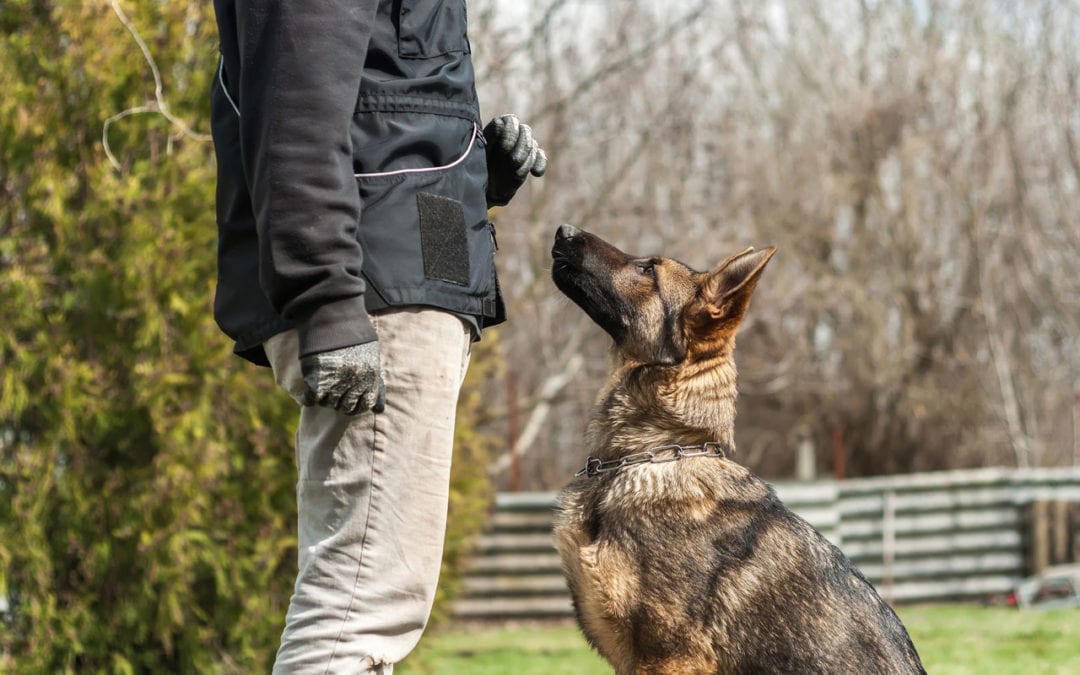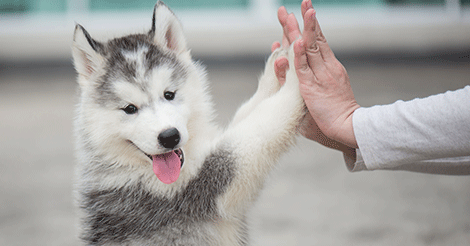Leading Pup Training Methods to Make Sure a Mannerly Animal
Reliable pup training is critical for cultivating a mannerly friend, and different techniques can substantially influence a dog's advancement. Among these, favorable reinforcement stands apart as a fundamental strategy, advertising depend on and encouraging desirable behaviors. Consistency in commands and early socialization are equally vital, laying the foundation for a well-adjusted pet. Furthermore, the roles of pet crate training and chain etiquette can not be overlooked. As we explore these techniques further, it comes to be clear that the success of pup training rests on a mix of strategies that can change your animal's habits in amazing means.
Favorable Support Techniques
Utilizing favorable support methods is important for reliable young puppy training, as it motivates desired actions through benefits rather than penalty. This approach profits from the all-natural knowing processes of dogs, reinforcing etiquette by giving concrete and instant rewards, such as deals with, appreciation, or play. By linking favorable outcomes with details activities, young puppies are a lot more likely to duplicate those behaviors in the future.
Reliable favorable support entails timing and consistency. Benefits must be provided right away after the preferred actions happens to produce a clear link in the puppy's mind. In addition, varying the kinds of incentives can keep a young puppy's interest and inspiration throughout the training procedure. Some puppies may respond much better to spoken appreciation while others might favor a favored plaything or treat.

Uniformity in Educating Commands
Maintaining uniformity in training commands is crucial for strengthening the lessons discovered via positive support strategies. Pet dogs prosper on routine and predictability, so using the very same verbal commands and hand signals for certain habits is necessary. This harmony aids pups comprehend what is anticipated of them, lowering confusion and stress for both the family pet and the instructor.

Timing also plays a substantial role in consistency. Commands need to be supplied quickly during training sessions and followed instantly by favorable support, such as deals with or appreciation. This prompt response helps strengthen the association in between the command and the desired habits.
Including uniformity into training sessions will produce a secure knowing atmosphere, promoting quicker mastery of commands. Ultimately, a well-structured strategy cultivates a solid bond in between the pup and its proprietor, causing a much more loyal and mannerly pet dog.
Socialization With Other Pets
Socialization with other family pets is vital for a young puppy's growth, as it aids them learn appropriate actions and communication skills in diverse social contexts. Very early interactions with various animals can substantially influence a pup's character and flexibility in different circumstances. When young puppies are exposed to a selection of pet dogs, they come to be a lot more certain and much less scared, which can avoid prospective behavioral problems later in life.

Instruct your young puppy to acknowledge signals from various other pets, such as indicators of playfulness or pain, promoting common regard and understanding. Normal socializing not just improves your young puppy's social abilities however also contributes to their general well-being, producing a much more harmonious living atmosphere.
Cage Training Conveniences
Recognizing the numerous advantages of crate training can considerably enhance both the young puppy's and owner's experience. Crate training gives a safe and risk-free setting for young puppies, ensuring they feel safeguarded when laid off. This complacency can significantly reduce anxiety and stress and anxiety levels for both the owner and the animal.
In addition, crates act as a useful housebreaking tool. Young puppies naturally stay clear of soiling their resting area, thus motivating them to hold their bladder until they great site are allow outside. This instinct can accelerate the housebreaking process, cultivating great routines early.
When not being watched,Crate training likewise helps in handling a young puppy's actions - puppy training. By giving an assigned area, owners can stop destructive actions, such as eating on furnishings or entering into dangerous materials. Moreover, cages can be advantageous throughout travel, supplying an acquainted space that can aid calm a young puppy in brand-new atmospheres.
Last but not least, establishing a dog crate routine motivates self-reliance, permitting pups to discover how to be alone without anxiety. In general, pet crate training is an effective technique for advertising technique, safety, and peace, bring about a well-adjusted, well-behaved pet dog.
Leash Training Basics
Leash training is an essential element of liable pet ownership that makes certain a satisfying and secure strolling experience for both the young puppy and its proprietor. Correct leash training begins early, preferably throughout the puppy's socialization period. When out in public., this training helps develop good practices and advertises favorable actions.
To begin, choose a comfy collar or harness that fits your pup well. Affix a strong chain, guaranteeing it is not also long, as this can lead to pulling and irregular behavior. Start in a quiet atmosphere to lessen diversions and gradually introduce your pup to brand-new environments.
Use positive reinforcement strategies, such as deals with and appreciation, to encourage your pup to stroll next to you. Stop walking and wait for them to return to your side before proceeding if your pup draws. This shows them that drawing will not generate ahead movement. Consistency is essential; method regularly and stay person, as proficiency takes some time.
Furthermore, include short training sessions with fun disturbances to develop your pup's emphasis. With dedication and determination, chain training will certainly cause a well-mannered buddy, site here making strolls satisfying for both the owner and the pup.
Final Thought
To conclude, utilizing efficient puppy training methods is critical for establishing a mannerly pet. Favorable reinforcement fosters trust fund and motivates desired behaviors, while uniformity in commands help in comprehension. Socializing with other pets improves adaptability and social abilities, and cage training offers a safe and secure atmosphere that supports house-training efforts. Chain training establishes appropriate walking routines, contributing to satisfying outings. In general, these approaches collectively advertise an unified connection in between puppies and their owners.
As we check out these methods better, it ends up being clear that the success of young puppy training pivots on a combination of techniques that can change your pet dog's actions in remarkable ways.
Utilizing positive support strategies is important for efficient pup training, as it urges wanted actions through rewards rather than punishment.Crate training likewise helps in taking care of a pup's behavior when not being watched.Leash training is an essential element of liable pet dog ownership that ensures a risk-free and satisfying walking experience for both the puppy and its owner.In conclusion, employing effective puppy training techniques is essential for establishing a anonymous mannerly animal.
Comments on “Puppy Training Techniques: Teaching Basic Commands for a Happy Pet”